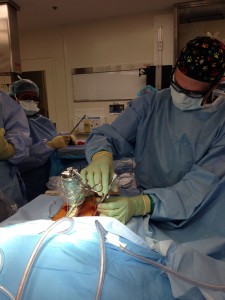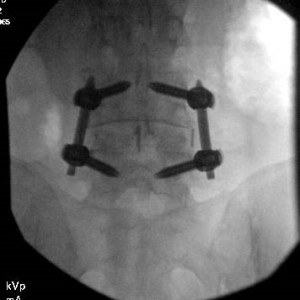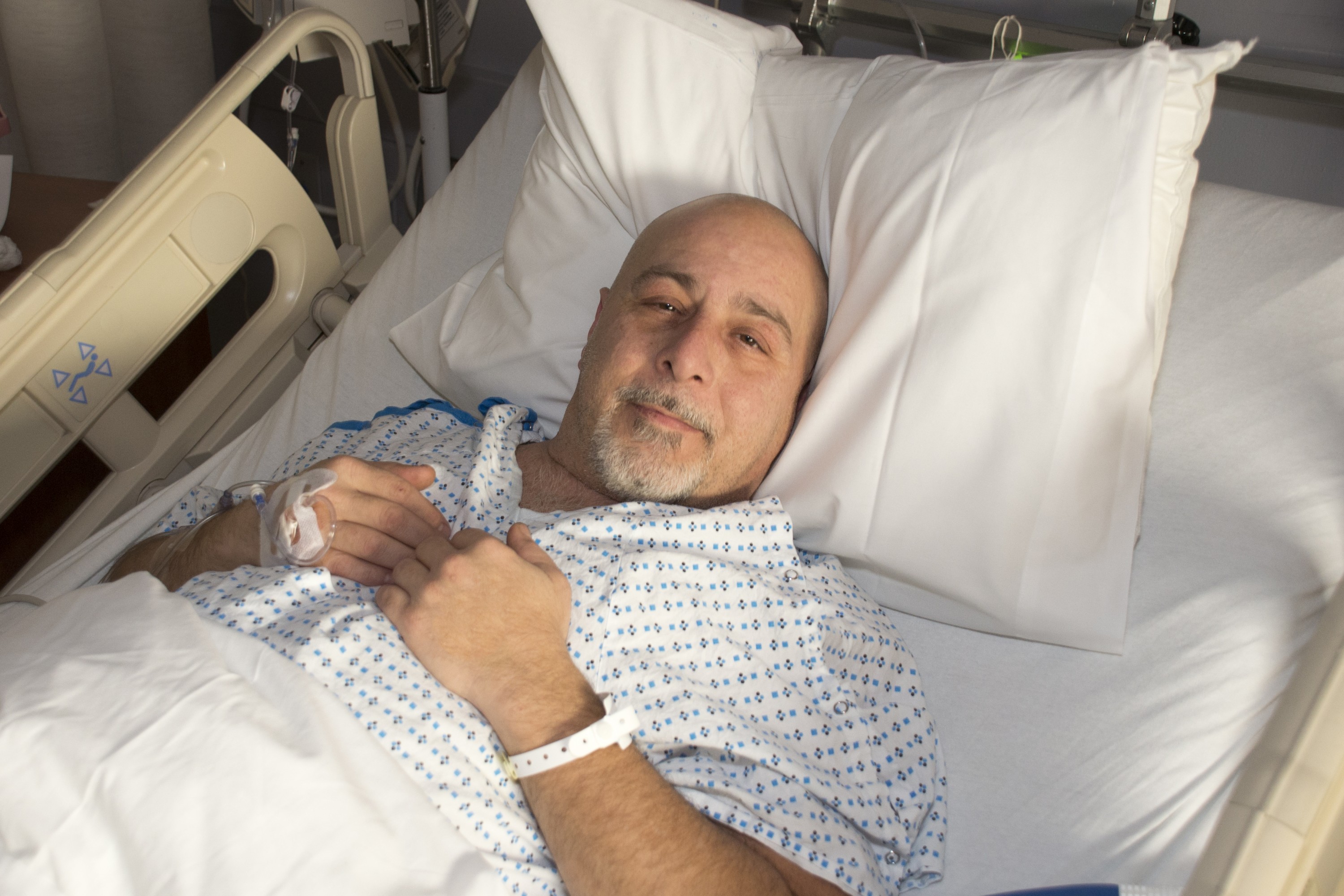On Jan. 7 Frank Ditaranto, 50, of Terryville, Connecticut was the first patient in New England to receive pioneering, robotic-guided spine surgery at UConn Health.

Using the new, state-of-the-art Mazor Robotics Renaissance Guidance System, UConn John Dempsey Hospital’s Dr. Isaac Moss performed the first minimally invasive, robotic-guided spinal procedure.
To relieve Frank’s severe lower-back and leg pain, Moss successfully removed and fused Frank’s L4-5 deteriorated disc using minimally invasive techniques.
“Thanks to the robotic technology, we were able to place screws in the patient’s spine with extremely high accuracy, small incisions and minimal intraoperative radiation,” said Moss, assistant professor of orthopaedic surgery and neurosurgery at the Comprehensive Spine Center of the UConn Musculoskeletal Institute at UConn Health. “The simplicity of the technology as well as our superb operating room staff made the transition to using the robotic-guided technology smooth and the procedure went extremely well.”
Moss used the innovative robotic technology’s software to pre-plan Frank’s spine surgery virtually, using a 3-D simulation of his spinal anatomy based upon his most recent CT scan. During the operation, Moss’ pre-operative 3-D plan was matched in real time with intra-operative X-ray imaging of Frank’s spine. Then during surgery, the technology’s small robotic arm, about the size of a soda can, helped pinpoint the most precise location for Moss to place his tools to insert screws and other hardware allowing for greater surgical accuracy, safety and reduced neurological risks.
A day after the robotic surgery, Frank already felt truly transformed: “For the first time I was able to stand up straight and not have pain shooting down my left leg.”
Frank had been working in the construction field for 30 years but one day that all suddenly changed.
“Two years ago while working construction my back went out and it stayed that way,” said Frank. “Ever since I have been bent over like I was 90 with shooting pain down my left leg to my toes, and I was unable to even straighten my leg. People don’t understand what it’s like to have bad back pain until they have it.”

Daily life and even walking became difficult for Frank. He tried pain medicine, physical therapy, aqua therapy, and epidurals but there was just no relief in sight — until now.
“I am too young at 50 years old to have to live like that. My primary care doctor suggested I go visit UConn Health,” said Frank. “I now have new discs and hardware in my spine and I am good to go. The robot is the best way to go about it.”
Frank says he feels “great” and most importantly, as a single-dad of a 16-year-old daughter he looks forward most to getting back to playing volleyball with her, and simply walking around, and living life pain free.
Moss adds: “I look forward to using this robotic-guided technology, now only available throughout New England and Connecticut at UConn Health, to help patients with spinal pathology by performing complex procedures with optimal precision and the best outcomes possible.”



